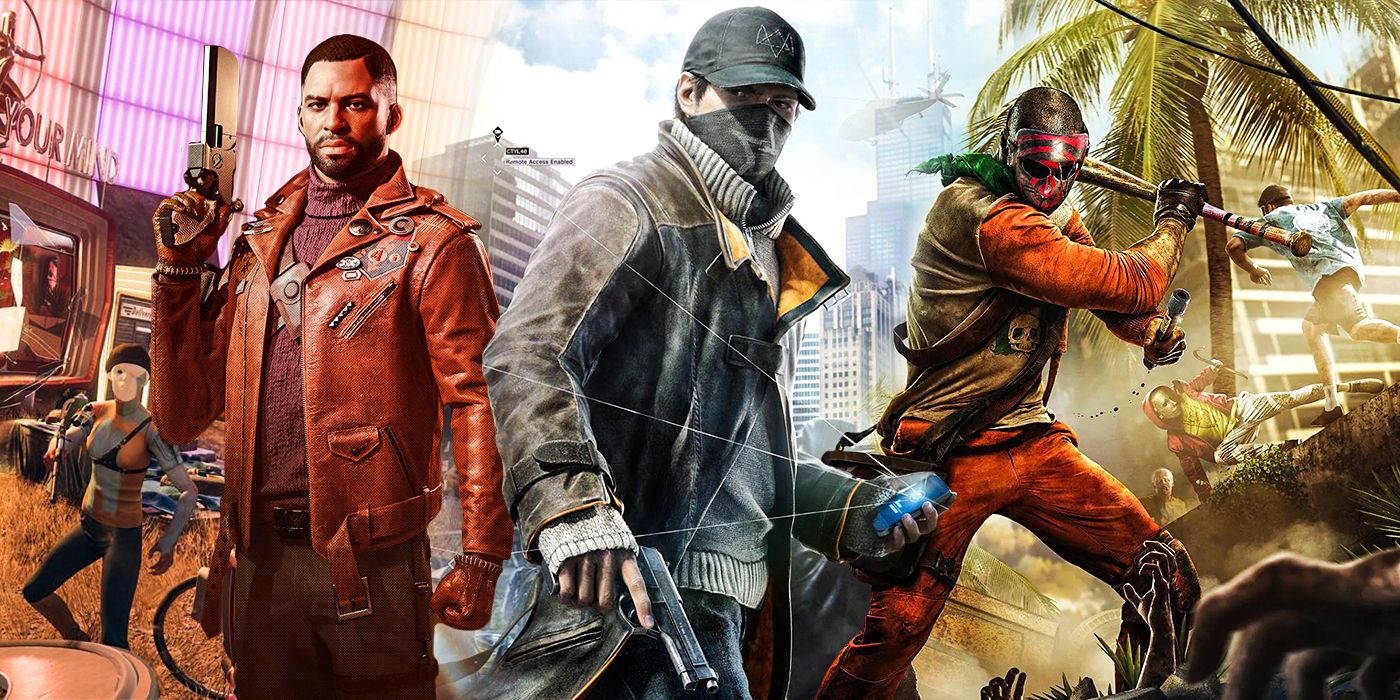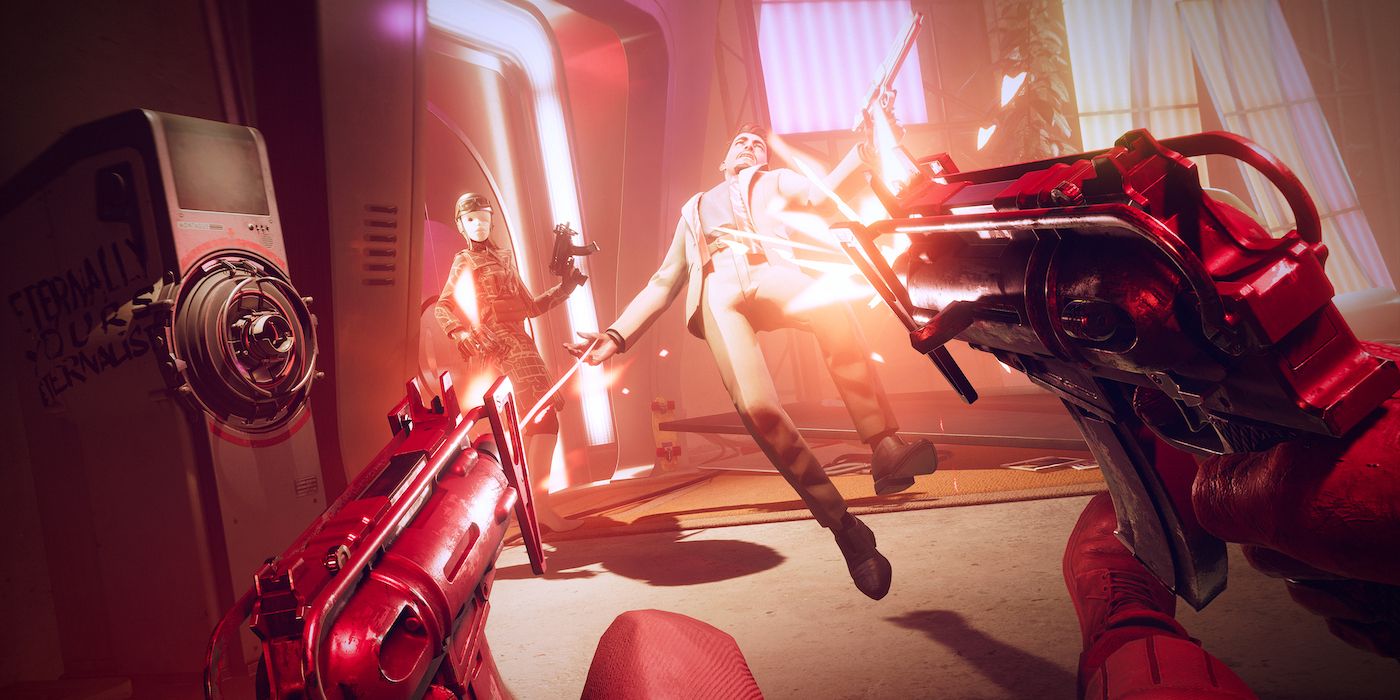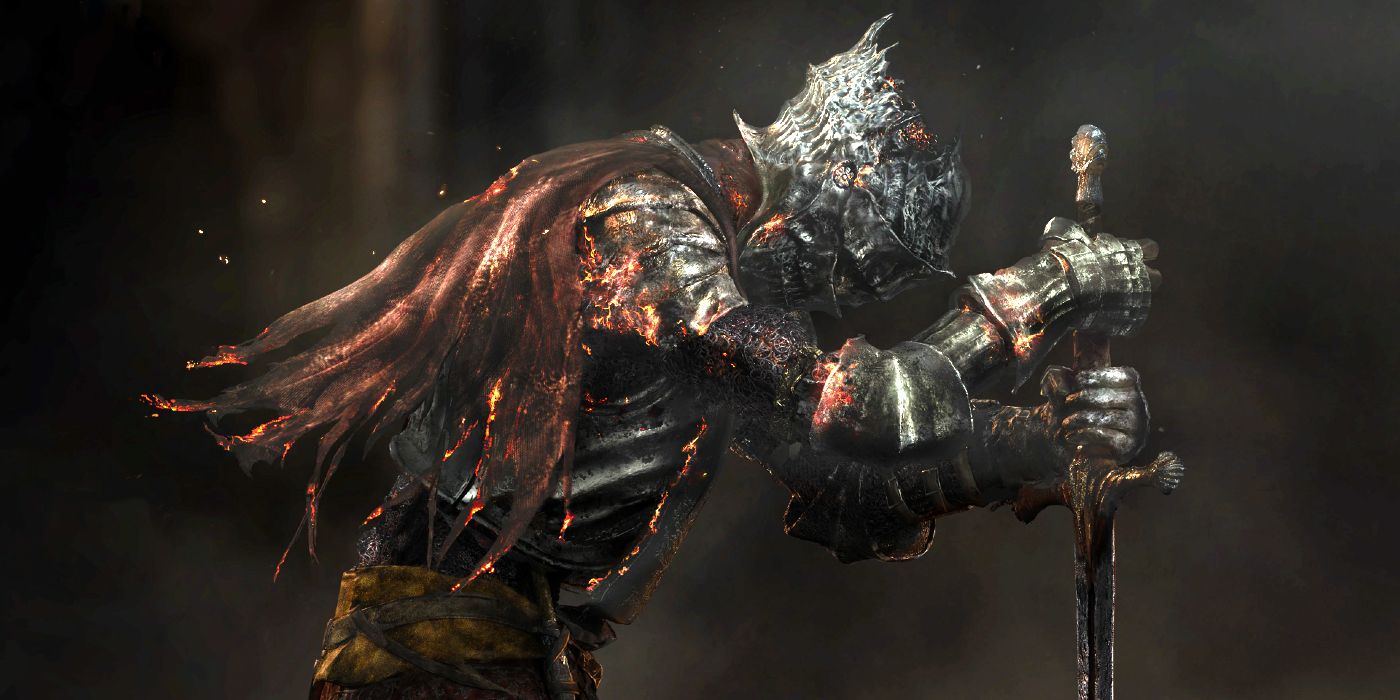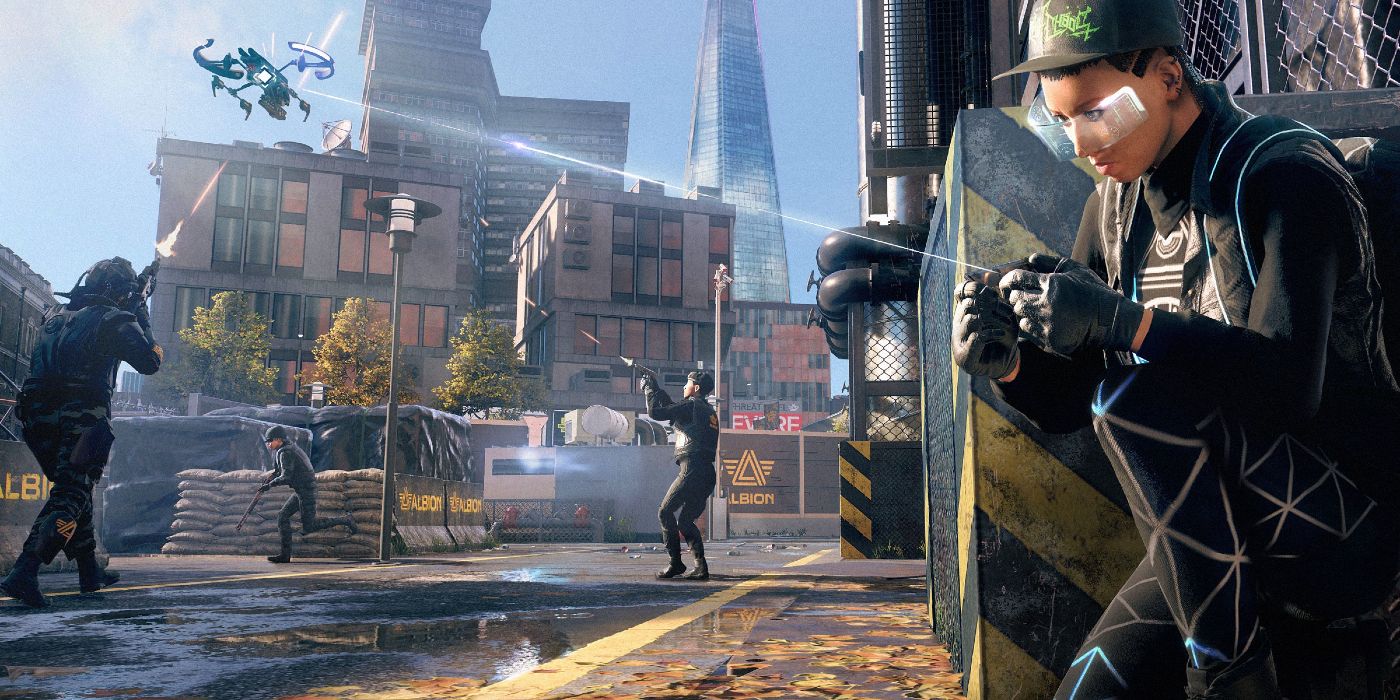Imagine this scenario: After painstakingly stealthing your way through the city of Updaam for the nth time, you’ve finally eliminated your target without being seen. The victim was a Visionary named Aleksis, a wolf-obsessed douchebag who was hosting a masquerade ball at his mansion for all of his a-hole friends. The game is Deathloop, in which players control assassin Colt Vahn as he attempts to close an endless timeloop on Blackreef Island by murdering everyone who stands in his way.
You’re weighing the quickest route back to the exit when a bright red alert message suddenly displays on the screen: JULIANNA IS ON THE HUNT. Crap. Another player has invaded the game as rival assassin Julianna Blake, which means your attempt at getting out of this level unseen and unscathed just got a lot more difficult. Their sole job is to ruin your run by taking you down, and failure for you not only means losing all of your loot, it also means you’ll need to take a whole ‘nother ride on the timeloop if you want another shot at your target.
This would seem like a textbook act of griefing, a form of online trolling in which a player will invade another player's game to harrass and distrupt them, ruining their playing experience for "lolz." And yet, though your plans for a clean getaway may have been completely upended by the sudden appearance of another player, there are two key differences between this scenario and a real griefing - one, player-vs-player invasion is part of Deathloop's design and is woven into the narrative; and two, you have to the option to disable the invasion feature any time you want. Griefing is part of the game in Deathloop, and part of what makes the experience of playing it so enjoyably tense.
But griefing isn’t always this fun - let’s take a look at the phenomenon and how game developers have begun to harness the chaotic power of griefing for good.
Grief Nation
As a term, griefing traces its roots back to the 1990s, as notably catalogued in a 1993 Village Voice article titled “A Rape in Cyberspace” about griefing that occured in a multi-user domain (MUD) game called LambdaMOO.
Since then, given the astronomic rise of multiplayer gaming, gamers the world over who’ve dared to mingle with the masses have encountered griefers of every stripe; the team killers, the loot stealers, the spawn campers and chat spammers. The eternal AFK’ers. The folks who pull a "Cask of Amontillado" and trap other players inside walls, whatever the hell that’s called. That one dude in 2006 in a match of Tom Clancy’s Ghost Recon: Advanced Warfighter who refused to do anything but combat roll across the map. He didn't shoot, or speak, or help take any objectives. He just rolled, across fields and roads and through bunkers, for two matches straight. People who, like the Joker in The Dark Knight, just want to watch the world burn.
No game genre is safe. From Minecraft to World of Warcraft to Call of Duty to online chess (believe it or not), if there’s a way to annoy or outright enrage the general rule-abiding populace, the griefers are there for it in all their misanthropic glory. Personal anecdotes of victimhood can be found in forums across the internet, while entire YouTube channels and Twitch streams are dedicated to showcasing and celebrating griefers at work, clearly demonstrating that deviousness has a market.
Sometimes, griefing can be funny, even entertaining. Sometimes it can reveal the impish nature of humanity, and can be a fascinating study of player psychology and social engineering. Sometimes, it goes beyond annoyance and clearly becomes outright harassment and trolling and requires developers to take action to make it cease. In the most severe cases, it boils over into the real world, exemplifed by "swatting" and other criminal activities.
But while griefing may be with us to stay, over the last couple of decades, game developers seem to have recognized that giving players an outlet for their more devious tendencies can actually lead to a good thing in the form of unpredictable, emergent gameplay, the stuff memories and hilarious reddit threads are made of. Taking a page from sandbox games and the unexpected moments that can simply happen when the right ingredients are there, the proliferation of invasion modes is taking griefing and shaping it into something altogether delightful.
Enter the Invaders
Give it to Dark Souls for not only inventing an entirely new genre - the Souls-like - but also introducing the world at large to the pleasures of condoned griefing in the form of PVP invasions. In the original Dark Souls and its subsequent sequels and remasters, online players in the midst of their single-player adventures can be invaded by other players, who show up in the game with an unnerving glowing red hue around their characters.
This disruption, which seems to occur at the most inopportune moments possible, is accompanied by an in-game warning that an invasion is underway, leading the primary player to drop whatever they were doing and prepare for...something. Most often, it’s a fight the invader is after. In the spirit of Dark Souls chivalry, many players bow before setting about their massacre, while others choose cowardly assassinations from above or behind, or simply run straight at their prey like a missile. And other times, it can be something entirely unexpected, like a helpful knight who wants to show you where to find all the level's secrets. A wizard who wants to play hide and seek without combat. Or an enemy who just wants to dance.
Ubisoft’s Watch Dogs series had a very compelling take on invasions in the form of its Online Hacking multiplayer, in which the invading player, disguised as a run-of-the-mill NPC, had to find and then hack the primary player which would initiate a countdown. To disable the hack, the primary player had to use their available tools to find the hacker and kill them. To make matters even more tense, the hacker had to stay within a very close radius of their target - meaning no hacking from across the map. This could lead to nail-biting moments of cat-and-mouse as the timer wound down, with the invader doing everything in their power to stay hidden while the primary player desperately searches every nook and cranny for their adversary. Watch Dogs also took the concept a step further by incentivizing the invading player with experience points, further encouraging players to adopt the mode instead of dismissing it as an interesting diversion.
Both Resident Evil 6 and Dying Light took a different approach with invasions, allowing invaders to take on the form of one of the monsters in the game, complete with their associated powers. Dying Light's Be the Zombie mode, while not exactly the pinnacle of creative naming, was the more successful of the two, giving the invading player control of a powerful, nimble hunter-type zombie that took advantage of the game's verticality in interesting ways.
The inclusion of invasion modes is also a way for developers to extend the replayability of their games, as the invasions become a way to continue enjoying the unexpected long after memorizing the rote behavior of NPCs and level layouts have become old hat. This is certainly the case for the aforementioned Deathloop, which explicitly lays as much out in its closing credits, and has a level-up system exclusively for Julianna where she can unlock loot and new costumes for both her and Colt.
Invasion modes can also be a fun way for players to engage in some light multiplayer PVP where they might normally never have touched a dedicated deathmatch or objective based mode, whether out of intimidation, disinterest, or previous bad experiences. Furthermore, in some special cases - and this looks like it's shaping up to be the case for Deathloop, given the amount of attention its invasion mode has already received - it can generate the kinds of memorable experiences that will live on long after the main story credits have rolled.




